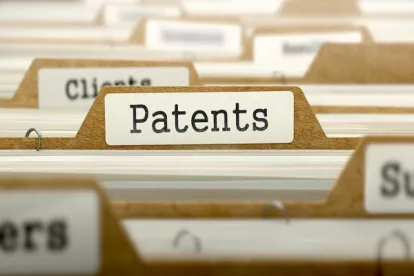As set forth in Article I, §8 of the US Constitution, patent law is a utilitarian system designed “[t]o promote the progress of science and useful arts, by securing for limited times to authors and inventors the exclusive right to their respective writings and discoveries.” Yet, today valuable life sciences patents are being invalidated by the courts for failing to meet subject matter eligibility requirements. While the current anti-patent sentiment may be blamed on abusive non-practicing entities (i.e., patent trolls) or a down-turned economy, the reality is tougher patent standards for diagnostic method patents. Even “valuable contributions can fall short of statutory patentable subject matter” See Bilkski, 561 US at 659.
In Genetic Technologies Limited v. Merial LLC, Bristol-Meyers Squibb Company (decided April 8, 2016), the Federal Circuit holds that a method for detecting a coding region allele of a multi-allelic genetic locus by amplifying a non-coding region and analyzing the amplified DNA sequence to detect the allele to be invalid for lacking proper patentable subject matter. Claim 1 in US Patent No. 5,612,179 recites:
A method for detection of at least one coding region allele of a multi·allelic genetic locus comprising:
a) amplifying genomic DNA with a primer pair that spans a non-coding region sequence, said primer pair defining a DNA sequence which is in genetic linkage with said genetic locus and contains a sufficient number of non-coding region sequence nucleotides to produce an amplified DNA sequence characteristic of said allele; and
b) analyzing the amplified DNA sequence to detect the allele.
The claimed invention was based on a discovery by Dr. Malcom J. Simons – known as linkage disequilibrium – wherein coding and non-coding regions of an individual’s genome appear linked together. By searching for certain non-coding regions and amplifying them, one can analyze and detect certain coding regions.
However, the court finds the instant case remarkably similar to the court’s recent decision in Ariosa Diagnostics, Inc. v. Sequenom, Inc., 788 F.3d 1371, in which the court invalidated a genetic testing method patent in which parental DNA was detected and amplified from maternal serum. In that decision as in the instant one, the court found the invention was directed to a patent-ineligible concept.
Following the two-part analysis for determining patent eligibility, as set forth in the Mayo/Alice Supreme Court opinions, the Federal Circuit found that the correlation between variations in the non-coding regions and allele presence in the coding regions as a consequence of linkage disequilibrium to be a natural phenomenon (step 1: is the claim directed to a patent ineligible concept, e.g., law of nature, natural phenomenon, or abstract idea?). The court found that claim 1 broadly covers essentially all applications, via standard experimental techniques, of the law of linkage disequilibrium to the problem of detecting coding sequences of DNA without limiting its scope to methods of detecting any particular alleles linked to any particular non-coding sequences.
Next, the court looked to see if the claim contained an inventive concept sufficient to transform the claimed law of nature into a patent-eligible application (step 2 of Mayo/Alice). The instant claim failed step 2 too since the court finds the amplifying and analyzing steps were indisputably well known, routine, conventional activities in the field. The patentee even admitted as much during prosecution when, to overcome an enablement rejection, the patent applicant argued that “amplification … [was a] technique… readily practiced by those in skill at the time the application was filed.” The instant claim also failed step 2 since the court found the detect the allele step was a mental process that merely sets forth a routine mental comparison which is a basic tool of scientific and technological work free for all men and reserved exclusively to none. Based on this analysis, the court invalidated the ’179 patent.
The practical result of this decision, as well as that in Ariosa and cases such as Association for Molecular Pathology v. Myriad Genetics is the loss of a patent incentive to develop valuable genetic tests. Given the value in genetic testing which can diagnose disease early and save lives, one must question whether the current jurisprudence is in line with the Constitutional directive to promote science or whether applicants are failing to satisfy the stricter eligibility requirements recently promulgated for diagnostic patents. Diagnostic patent applicants would be well-served to recite claim features, e.g., methods of detecting particular alleles linked to particular non-coding sequences, which the court can use to determine that a claim contains subject matter sufficient to transform a claim purportedly directed to a law of nature into a patent-eligible one.




 />i
/>i

